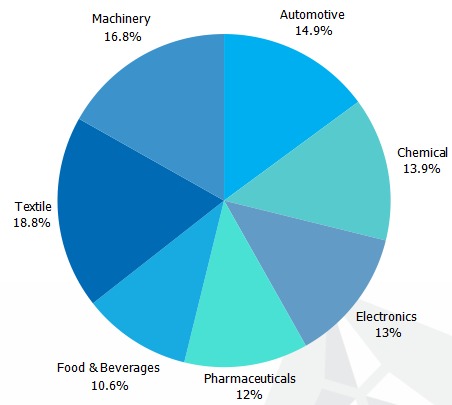Prologue
- The manufacturing sector has witnessed a substantial increase in working capital over the years. In 2023, the working capital stood at approximately ₹13.53 trillion, up from ₹11.09 trillion in 2022.
- The services sector generally exhibits lower working capital requirements compared to manufacturing, primarily due to minimal inventory needs and a greater emphasis on receivables management.
- The trading sector’s working capital is heavily influenced by inventory turnover and receivables cycles. Retail trading often has shorter working capital cycles due to cash-based transactions, whereas wholesale trading may face challenges due to longer payment terms.
Introduction
Working capital, defined as the difference between current assets and current liabilities, is a critical measure of a company’s liquidity and operational efficiency. Its management, often referred to as working capital management (WCM), plays a pivotal role in ensuring the smooth functioning of businesses by balancing cash flow, liquidity, and profitability. In India, working capital requirements vary significantly across sectors due to differences in operational models, production cycles, and market dynamics.
The Manufacturing sector typically demands high working capital due to inventory-heavy operations and extended production cycles. In contrast, the Services sector has moderate working capital needs, primarily focused on managing receivables rather than inventory. Meanwhile, the Trading sector operates with relatively low working capital requirements, driven by rapid inventory turnover and cash-based transactions.

Understanding sector-wise trends in working capital is essential to navigate the challenges posed by inflation, supply chain disruptions, and changing business environments. It also helps businesses optimize their financial strategies, ensuring both growth and stability in an evolving economic landscape. This analysis highlights the unique working capital dynamics in manufacturing, services, and trading sectors, shedding light on their distinct characteristics and emerging trends.
Key features of Working Capital
Working capital management is critical for maintaining a balance between profitability and liquidity, ensuring that the business remains financially stable in both the short and long term.
Definition:
- Working Capital = Current Assets – Current Liabilities. It represents the short-term financial health and liquidity of a business.
Purpose:
- Ensures a company has enough funds to meet its day-to-day operational expenses, like paying suppliers, employees, and managing inventory.
Liquidity Indicator:
- A measure of a company’s ability to cover its short-term liabilities using its short-term assets. It reflects the business’s short-term financial strength.
Positive vs. Negative WC:
- Positive WC: When current assets exceed current liabilities, indicating good liquidity and financial stability.
- Negative WC: When current liabilities exceed current assets, indicating potential liquidity problems and financial strain.
Importance for Operations:
- Adequate WC ensures smooth business operations, avoids disruptions in production, and maintains credibility with suppliers and creditors.
Sector-Specific Needs:
WC requirements vary significantly across sectors:
- Manufacturing: High WC due to inventory and production cycles.
- Services: Moderate WC, mainly for managing receivables.
- Trading: Low WC, with fast inventory turnover and cash-based sales.
Components of WC:
- Current Assets: Cash, accounts receivable, inventory, etc.
- Current Liabilities: Accounts payable, short-term debts, accrued expenses.
Efficiency Measurement:
- Efficient WC management reduces the cost of financing and improves profitability by maintaining the right balance between assets and liabilities.
Impact on Profitability:
- An optimal level of WC allows businesses to maximize profits without compromising liquidity, while excessive WC can reduce returns on investment.
Time Sensitivity:
- WC is time-sensitive and can fluctuate depending on seasonality, economic conditions, and business cycles.
Financing WC:
- WC can be financed through trade credit, short-term loans, or by utilizing retained earnings.
Working Capital Cycle:
- The time taken for a business to convert its current assets into cash and settle its short-term liabilities. Efficient cycle management helps in reducing the need for external financing.
Managing working capital efficiently is key to maintaining a healthy balance between liquidity, operational efficiency, and profitability. Furthermore, efficient working capital management helps improve profitability by ensuring that the company does not tie up excessive funds in inventory or receivables, which can reduce returns. It also allows businesses to take advantage of opportunities such as negotiating better payment terms with suppliers or capitalizing on growth prospects without resorting to expensive short-term loans.
In industries like manufacturing, where production cycles are longer, or in service sectors with extended credit periods, having optimal working capital can make the difference between maintaining a steady operation and facing financial strain. Overall, working capital plays a pivotal role in enhancing operational efficiency, improving liquidity, and supporting business growth.
Working Capital in the Manufacturing Sector
Working capital is a crucial metric in the manufacturing sector as it directly impacts a company’s liquidity, operational efficiency, and profitability. It represents the short-term financial health of an organization and reflects its ability to manage day-to-day operations.
In the manufacturing sector, working capital trends can vary depending on factors such as economic cycles, supply chain dynamics, industry competition, and regulatory changes.
Characteristics:
The manufacturing sector is capital-intensive, with long operating cycles due to procurement, production, and sales processes. Key components influencing working capital include inventory, receivables, and payables.
- The manufacturing sector typically requires high working capital due to its inventory-heavy nature and longer production cycles.
- Significant investments are needed in raw materials, work-in-progress, and finished goods.
- Credit periods for customers and reliance on supplier credit impact working capital dynamics.
Trends in Working Capital
- High Inventory Levels: Manufacturing companies typically maintain high inventory levels to avoid production disruptions. Sectors like automotive, pharmaceuticals, and FMCG often carry higher inventory due to supply chain uncertainties and demand variability.
- Receivables Management: Extended credit terms are common in B2B transactions, resulting in higher receivables. The average debtor days in manufacturing vary from 30 to 90 days, depending on the industry.
- Supply Chain Financing: Manufacturers are increasingly adopting supply chain finance solutions to optimize working capital, especially in sectors with large vendor bases.
- Lean Manufacturing Practices: There is a growing trend towards adopting lean manufacturing and just- in-time inventory management to reduce working capital requirements.
Analysis of WC in Manufacturing sector
- Textile (19.7%) and Machinery (16.8%) show the highest working capital requirements, likely due to longer production cycles and inventory management needs.
- Food & Beverage (12.6%) and Pharmaceuticals (12.6%) maintain lower working capital levels, possibly due to efficient inventory turnover and strong supplier relationships.
- Automotive and Chemical industries maintain moderate working capital levels between 29-33%, balancing operational needs with capital efficiency.
- Sectors with high WC percentages may benefit from implementing improved inventory management systems.
- Lower WC sectors demonstrate potential for operational efficiency improvements in other sectors.
- The 16.2% range between highest and lowest suggests significant variation in working capital management practices across manufacturing.
- Efficient working capital management in manufacturing can free up cash for reinvestment in technology, capacity expansion, and innovation.

Working Capital in the Service Sector
The service sector, which includes industries such as IT, consulting, hospitality, healthcare, education, and financial services, operates differently from manufacturing industries. Unlike manufacturing, where significant investments in physical inventory and production processes are required, the service sector revolves around intangibles like expertise, time, and customer relationships. This results in unique working capital trends and dynamics.
Characteristics:
The services sector is less capital-intensive but highly reliant on human resources and technology. Key working capital components include receivables and payables, with limited inventory involvement.
Limited Physical Inventory:
- Service businesses typically don’t hold significant physical inventory, reducing the need for inventory management. Working capital is often focused on labor and intangible assets instead.
High Labor Intensity:
- Labor costs are the primary expense in service businesses, with payroll being a major working capital consideration. Managing employee-related expenses is critical to liquidity.
Accounts Receivable Dominance:
- Revenue is often generated through credit sales, making accounts receivable a significant part of working capital. Efficient collection is key to maintaining cash flow.
Variable Revenue Streams:
- Service businesses may experience fluctuating revenue due to seasonality or project-based work. Predictable revenue models, like subscriptions, can help stabilize cash flow.
Cash Flow Sensitivity:
- Cash flow can be volatile in services due to delays in client payments or variable demand. Managing reserves is crucial to bridging cash flow gaps.
Trends in Working Capital
- Shift Toward Digital Payment Systems: Many service businesses are adopting digital platforms for faster payments and invoicing. This accelerates cash inflows, improving working capital management.
- Increase in Subscription Models: More service companies are shifting to subscription-based revenue models, creating predictable cash flows. This reduces working capital volatility and helps with liquidity management.
- Automation and AI for Cash Flow Management: Businesses are using AI and automation to forecast cash flow, optimize receivables, and manage expenses, reducing the reliance on manual processes and improving working capital efficiency.
- Focus on Efficient Receivables Management: Companies are increasingly prioritizing the reduction of accounts receivable days. Technologies like electronic invoicing and automated reminders help businesses collect payments faster.
- Flexible and Outsourced Labor Models: The rise of the gig economy and outsourced work reduces the need for large, fixed labor costs. This flexibility allows businesses to scale more easily, improving working capital efficiency.
- Increased Focus on Cash Flow Liquidity: The pandemic highlighted the importance of liquidity. Many service businesses are keeping higher cash reserves to manage unforeseen disruptions and reduce the risk of liquidity shortages.
Working Capital in the Trading Sector
Working capital in the trading sector, which includes wholesale, retail, and distribution businesses, plays a vital role in ensuring smooth operations, particularly due to the sector’s reliance on inventory, supplier relationships, and customer payment terms. Here are key aspects of working capital in the trading sector:
Characteristics:
Working capital in the trading sector, which includes wholesale, retail, and distribution businesses, plays a vital role in ensuring smooth operations, particularly due to the sector’s reliance on inventory, supplier relationships, and customer payment terms. Here are key aspects of working capital in the trading sector:
Trends in Working Capital
- Inventory Turnover: Traders aim for high inventory turnover to maintain profitability. Sectors like consumer electronics and retail see faster cycles, while commodities like steel and chemicals have slower turnover.
- Credit-Driven Business Models: The trading sector often extends credit to buyers, resulting in higher receivables. Average debtor days range from 30 to 60 days.
- Supply Chain Optimization: Traders are adopting technology for inventory tracking, demand forecasting, and supplier management to minimize working capital requirements.
- E-Commerce Impact: The growth of e-commerce has shortened working capital cycles for retail traders by enabling faster sales and payments.
Comparative Analysis of Working Capital Trends
Working capital trends in India’s manufacturing, services, and trading sectors highlight the diverse challenges and opportunities across industries. While manufacturing requires strategies to optimize inventory and production cycles, services focus on receivables management, and trading prioritizes inventory turnover. The adoption of technology and innovative financial solutions like SCF will play a critical role in addressing working capital challenges and driving growth in these sectors. Businesses that proactively manage their working capital will gain a competitive edge in the evolving economic landscape.
Challenges & Risks:
Working capital management in India faces distinct challenges across the Manufacturing, Services, and Trading sectors. These challenges stem from economic conditions, regulatory frameworks, infrastructure issues, and sector-specific factors.
- Supply Chain Disruptions: Manufacturing in India often faces supply chain issues, such as delays in raw material procurement or disruptions due to factors like transportation bottlenecks or trade policies.
- Rising Input Costs: Manufacturers, particularly in sectors like textiles, chemicals, and automotive, are dealing with fluctuating raw material prices, leading to unpredictable costs. T
- Fluctuating Demand: Many service industries, such as hospitality, tourism, and education, face fluctuating demand, which makes cash flow unpredictable. Seasonal or cyclical demand patterns can result in cash flow shortfalls, challenging working capital management.
- Delayed Receivables: Service businesses, particularly in consulting, healthcare, and IT, often face delayed payments from clients. Prolonged receivables cycles can strain liquidity, forcing businesses to seek short- term financing to cover expenses.
- Credit Risk and Payment Delays: Trading businesses in India often deal with customers on credit. Delayed payments and customer defaults are significant risks, especially in industries where credit is widely extended, such as wholesale trade.
Conclusion:
Working capital management is a critical aspect of financial efficiency across all sectors in India. While manufacturing faces challenges from high inventory and production cycles, the services sector’s focus on receivables highlights the need for stricter credit management. The trading sector’s rapid inventory turnover emphasizes the importance of leveraging digital tools to stay competitive. By adopting sector-specific strategies, businesses can optimize working capital, enhance liquidity, and improve profitability, ensuring resilience in an evolving economic landscape.





